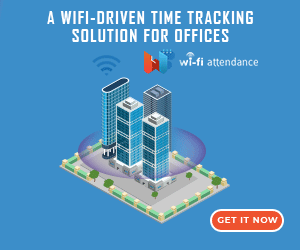
An employment contract means that an employee and employer agree to work with each other. Employees expect compensation for their work. Employers have the basic expectation of a regular ongoing attendance from their employees. But poor attendance rate is one of the most challenging problems tackled by the HR departments today.
Absenteeism can be of several kinds. Some are statutory holidays, generally planned in advance and beneficial for the employer and employee. These are scheduled and their impact on work is lesser.
Others include reasons of illness, family-related issues, and weather changes. These are unavoidable and expected to a certain extent. There are some avoidable absences but employees are habitual to them leading to troubling patterns. These are unscheduled and cause a disruption in the work and output.
Absenteeism results in affecting the cost-effectiveness of an organization. It is, therefore, important for the HR team to manage this with knowledge of the various schemes applicable to employees.
These include contract laws, employment rights, workers’ compensation schemes, and much more. An employer may be satisfying the obligations of one but missing out on the other.
Here’s a list of 12 common attendance management problems with certain tips on how to fix them:
1. No Plan
Employers understand that introducing an absenteeism management program will lessen the chances of absences. It will significantly improve productivity and ensure management of related costs. Yet a lot of them forget to have a plan.
To begin with, employers must track the problems of absenteeism. Is it a major problem? What are the common reasons for absenteeism? With all the figures and facts in place, employers can identify the challenges and develop a plan that avoids all kinds of financial repercussions.
2. Lack of a Policy
Majority of employers do not have an attendance management policy. If they do, it is outdated. Ad-hoc decisions are not advisable in the absence of a policy as they result in inconsistency. An attendance management system needs to also comply with certain legal considerations based on the structure of the organization.
So, employers must develop a policy according to legal realities and the issues and objectives of the organization. Attendance management policies need alteration from time to time to ensure that they are consistent and updated.
3. Application of the Policy
A policy without application is just like notes on a piece of paper. Certain organizations outline attendance policies but do not enforce them correctly. If there are two employees in the same job category, the rules of absenteeism must also be the same for both. It must not be discriminatory.
4. Poor Tracking
It is the job of the supervisors to track employee attendance and their problems. They are responsible for managing their employees. But, a lot of supervisors are not trained and informed about this duty.
The task of managing employee attendance is critical to a company’s success. Ensure that supervisors receive training on attendance management. They must know how to document attendance and when to apply the rules of the policy.
5. Poor Administration
In certain organizations, supervisors are well-aware of their responsibilities of attendance tracking. However, they do not have the support tools to perform the important task.
It is important to introduce the frameworks and technologies that help with the attendance management process. These tools efficiently record the metrics and also gather all other information which may be necessary.
6. Inconsistent Capturing of Absences
It is vital to record every time an employee is absent, including information such as the date, the time, and the reason. This makes it possible for employers to understand where the problem lies.
If absenteeism is becoming a pattern, it is easier to detect the same with the recording of such information. These documents will provide all information that you require to take necessary action.
For instance, if you notice common absenteeism around holidays or several missed hours, disciplinary action is essential to avoid such troubling patterns. When employees realize that they are held accountable for their actions, they take responsibility for being more cautious.
7. Addressing Problems
If attendance records are not monitored, it can lead to further problems. With all the information documented, it is vital that you identify the problems and then have a conversation with the employee. A solution must be proposed to address the problem.
Take a note of all the incidents of absenteeism, the reason for each, and discuss steps of improvement with the employee. If the problem persists even after verbal counseling, a formal action may be vital.
8. Lack of Distinction between Absences
Most employers take an absence as an absence. They do not delve deep into understanding how the law distinguishes between different absences. There is an innocent absence and a culpable absence.
Innocent absences are the ones that are not under the control of employees. They may be due to a disability or due to a condition that does not let the employer attend to his duty.
Culpable absences are under the control of an employee. They are avoidable and do not have a reasonable excuse. Managers and supervisors must distinguish between the kinds of absences and accordingly develop policies for action.
9. Medical Verification
Many employers rely on the face value of that little doctor’s note. This is quite a practical problem. Employers have full right to get this document verified by their medical professionals but do not do so. This is either because of their laidback attitude or because they do not wish to spend more time on the issue of absenteeism.
Employers must take opinion from their medical advisors on the information they receive from employees. The type and amount of information that they can seek may vary. But they must not avoid the process of medical verification.
10. Dependence on Third Party Organizations
Sometimes the involvement of other organizations hampers the process of addressing attendance problems. This is because the workers’ compensation authorities or the insurers persuade the employers to rely on their decisions.
However, their input is not always true. Another organization may be dealing with a different set of policies and rules that do not comply with the standards of your organization. Reliance on such third party vendors must be reduced and a decision must be taken in-house.
11. No action
Certain supervisors have the habit of letting things go. They know that an employee has been taking frequent leaves but do not take action. This is because they are untrained, unwilling, too busy or too nice.
Employers must firmly take action on patterns of absenteeism. They must demand proper reason and enforce the rules of the attendance management policy.
12. Weak Accommodation Process
In certain cases, it is important to accommodate for the reason of absenteeism. These cases are protected under human rights legislation. But if the employer is not aware of the same, there are chances of granting leave requests too strictly or too leniently.
Employers must work on their accommodation process. They must know when and how to answer their employees’ demands.
There are several different tools for efficient attendance management. Employers may choose software based on their requirements and by implementing the same, they can improve the rates of absenteeism in their organization. Furthermore, employers can easily glance through the reasons for absenteeism and promptly address issues of importance.












